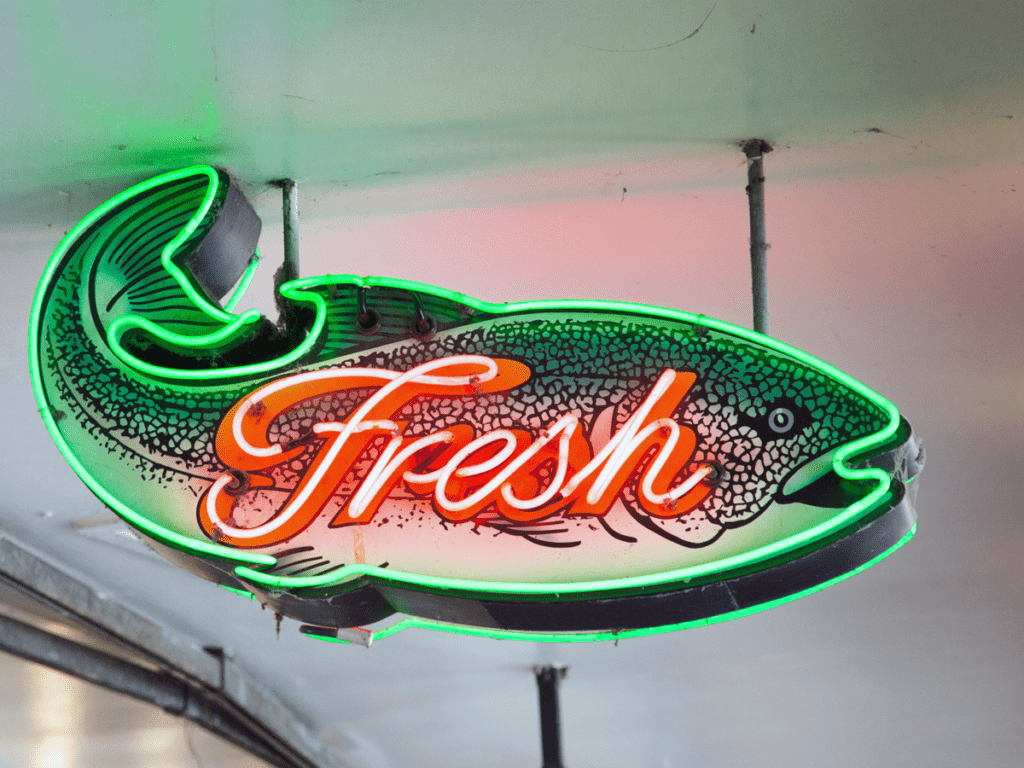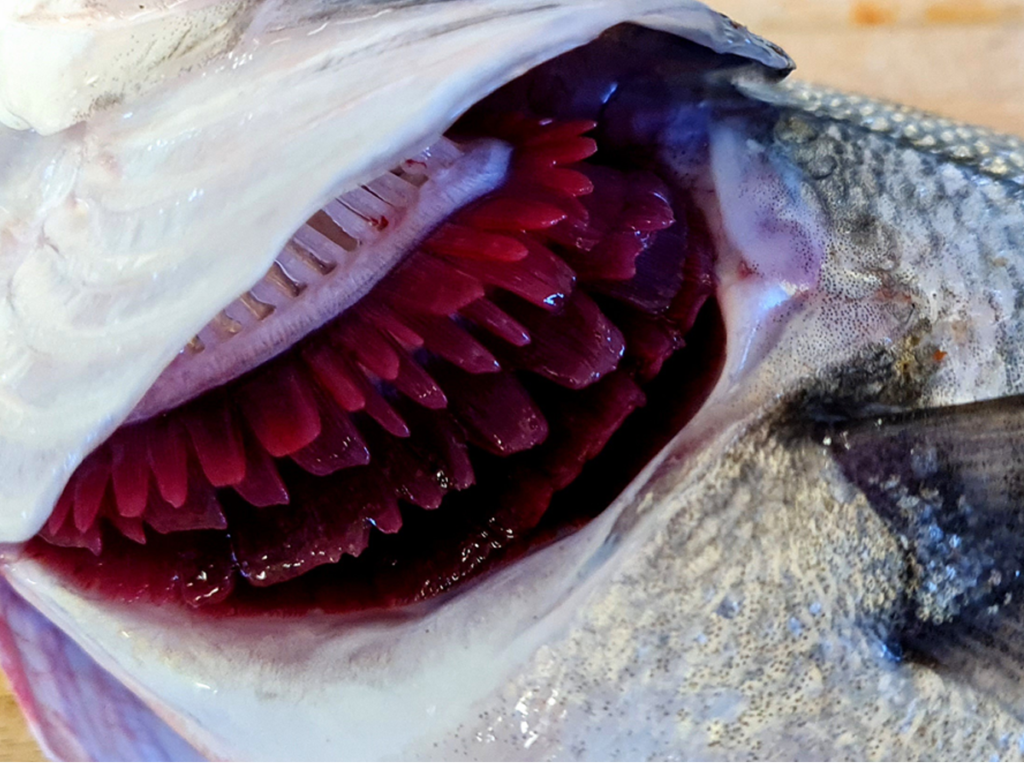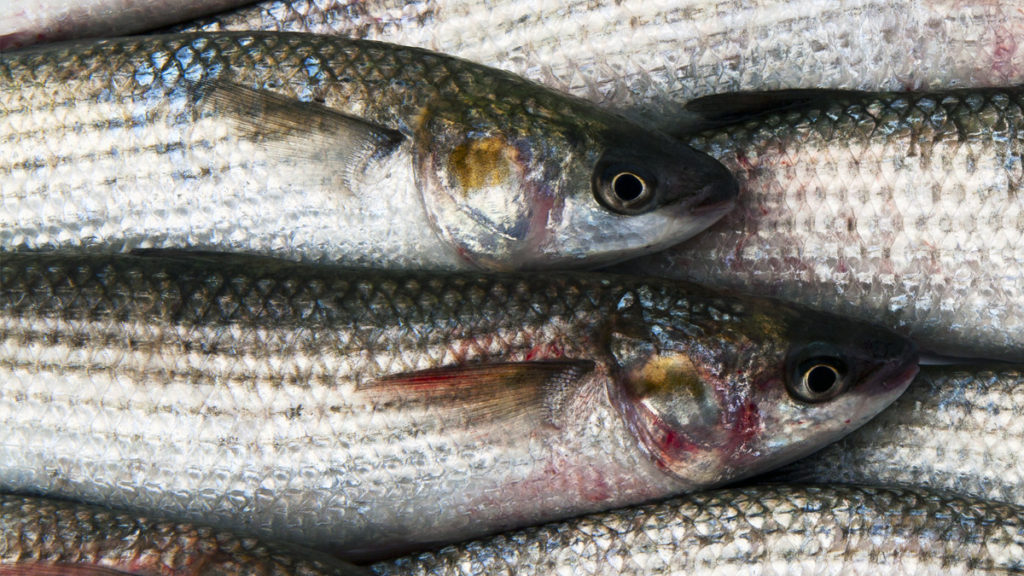Do you like the idea of cooking seafood, but don’t know where to start? Don’t fret. You’re not alone. In fact, many people worry about buying, storing, preparing, and yes, cooking seafood. We understand this fear! After all, we too had the same worries when starting out on our very own seafood journey.
We asked some slightly scared seafood lovers how we could help conquer their fears. They all said, ‘some handy tips would be great!’
So, if you’re looking to introduce more seafood into your diet the Fish Face Seafood Blog Beginner’s Guide to Seafood is for you.
The first blog post in our series is all about what to look for when buying seafood.
#1 – The Fish Face Beginner’s Guide to… Buying Seafood

1. Find a fishmonger
If you’re serious about eating fresh, locally sourced seafood then you must find a fishmonger. It’s as simple as that. Better still, find a couple of fishmongers local to you and you’ll be in dreamland.
Get to know your fishmonger, be nice to them, ask questions, buy them a little gift for Christmas. Over time, your enthusiasm will be rewarded with little snippets of invaluable information that will help you prepare, cook and learn more about seafood.
2. Buy with your eyes
Learn to know what fresh seafood looks like. Fish should be bright, shiny and firm to the touch. A super fresh fish will be stiff (hence stiff-fresh). Some species, such as Mackerel, even raise their pectoral fins when really, really fresh. It’s as if the fish is signalling to you, ‘Hey, I’m fresh – yep, me over here’.
Surprisingly, many fish give away little signals as to their freshness. Super fresh Sea Bass extend their beautiful, spiked dorsal fins, the orange spots on a Plaice will glow, almost as if neon, while the belly of the Sardine stays firm and tight.
The gills of any fresh fish should be a lustrous pink or red in colour. If the gills are turning brown, then you know the fish isn’t as fresh as it could be. Also, take a look at the eyes of the fish. They should be clear and bright, as opposed to dull and sunken.

Shellfish and larger crustaceans, such as Crab and Lobster, should always be bought live. Again, use your eyes. Look for damage to shells and avoid anything cracked, broken or lifeless.
3. Use touch (and smell)
Ok, if you want to befriend your fishmonger it’s probably not a good idea to go around poking your fingers into their beautifully presented slab of fish.
However, when you get your fish home spend a little time handling it. Learn what a fresh fish should feel like. Is the belly intact, is the flesh firm? Even when gutting the fish you can tell how fresh it is by using touch. You’ll soon learn the difference between the intact, firm innards of a fresh fish, as opposed to the sloppy mess of a deteriorating fish.
Unlike wet fish, your fishmonger may let you handle shellfish and crustaceans. If the opportunity is offered, then seize it with, well, both hands. A Crab should feel heavy for its size. As should Oysters, Clams, Cockles and Mussels.
Learning how fresh seafood should smell is another good skill to acquire when buying seafood. When at home with your newly bought, fresh seafood give it a quick sniff.
Fresh seafood doesn’t smell of anything other than the sea. If it does smell of something else, then it’s already on a one way journey to unpleasantness.
4. Buy whole
The quickest and most enjoyable way to start learning about seafood is to buy your fish whole. As explained above, handling seafood is a great way to learn and develop an understanding of whatever it is you’re about to cook.
Gut the fish yourself. Clean it. Fillet it. It’s all great learning. Yes, you’ll need some plasters, as you’ll no doubt catch yourself on the spines of a Sea Bass or the sharp bits on the Gurnard’s plated head, but you’ll certainly learn from it.

Additionally, buying a fish whole is a more sustainable and sensible approach to seafood. Buy whole and use every part of the fish if you can. If you’re cooking just fillets, then use the rest of the fish to make a beautiful stock.
Alternatively, be brave. Make a fish head soup. The cheeks of most fish contain some wonderfully delicate and tasty meat. Or, be even braver and explore the increasingly popular topic of fish offal. The liver of a John Dory is a great place to start your own offal journey (you can read our blog post on cooking a John Dory liver here).
Also, don’t forget that Crab, Lobster, Langoustine and Prawn shells make for a great stock or bisque.
5. Education, education, education
Learn as much as you can about seafood. Visit the Marine Conservation Society’s Good Fish Guide and read about sustainability, lower-impact fishing methods, eco-labelling and seasonality of seafood.
Watch cookery programmes on TV, read articles online, buy magazines and cookbooks, and of course, subscribe to the Fish Face Seafood Blog!
Buy seafood and experiment. We’re not talking about shelling out on a stunning Turbot or fine Brill, but rather start small and affordable. Build your confidence.
Visit your fishmonger regularly, ask questions and listen in on conversations between your fishmonger and other customers. Hell, speak to the other customers! Ask what they’re cooking and how they’re cooking it.
The point here is, never stop learning. Use every visit to your fishmonger to discover something new about buying seafood.
Fish Face Seafood Blog Top Tip
As you probably already know, we love a cookbook. However, if you’re looking for a book to help you identify some of the species found in the waters around our coastline then we strongly recommend Dr Peter Henderson’s, Identification Guide to the Inshore Fish of the British Isles. The book is available to buy from Amazon.
We hope you’ve found the Fish Face Seafood Blog Beginner’s Guide to Buying Seafood helpful. Keep a look out for the next blog post in the series. Hit the social media buttons below and follow us on Instagram and Twitter to stay up to date!